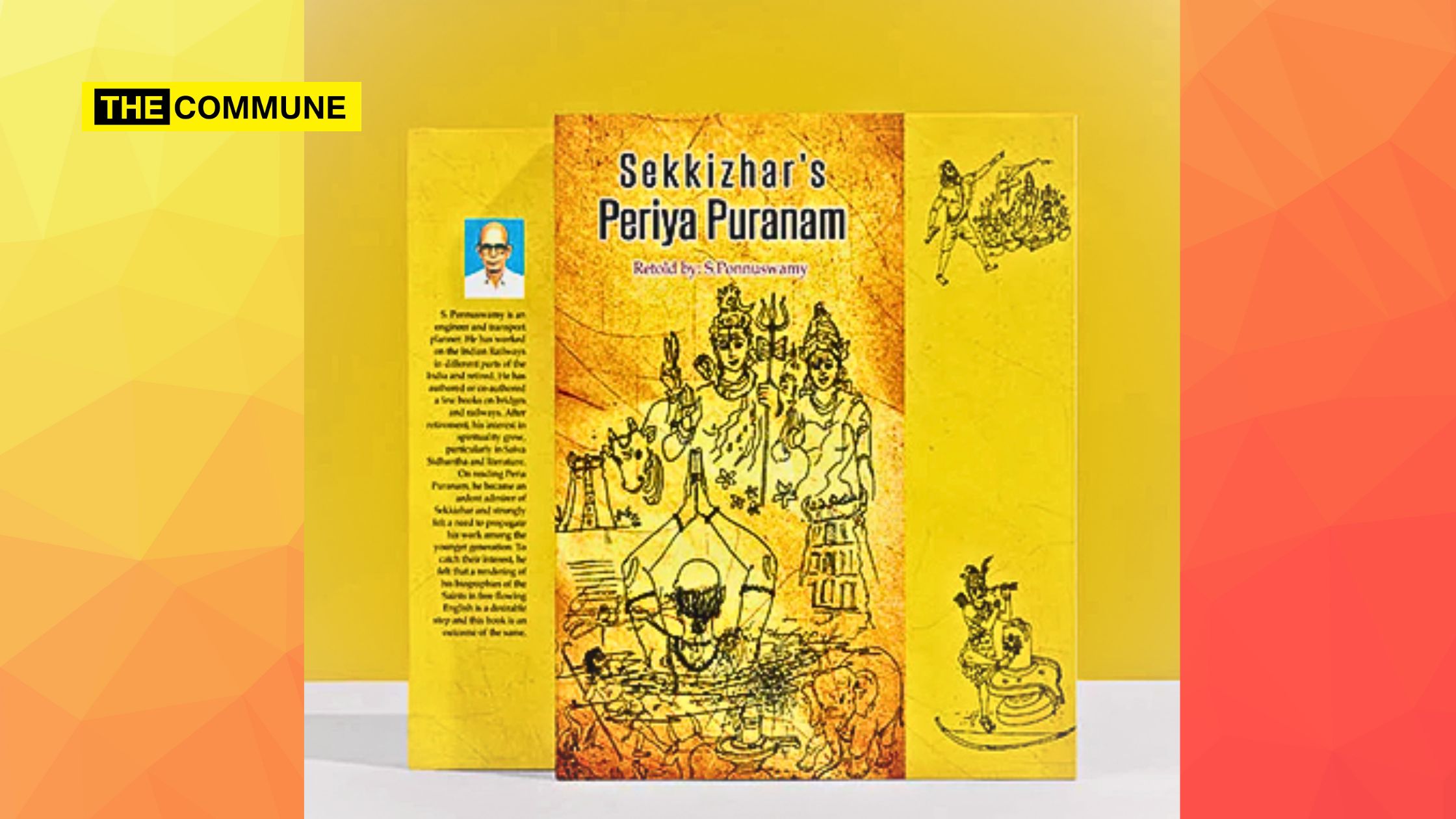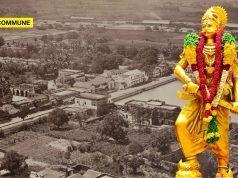
Tamil literature is quite expansive with very rich and extremely well-documented accounts of the various devotional saints and divine souls who would have walked on this holy land and left their permanent imprints on the same. During my visits to various kshetras, it became an ardent desire that I needed to read these classics but was limited due to my knowledge of Tamil. This book is a godsend for interested askatas like me who would like to savour the wisdom of the eons gone by in a language more convenient for us. Giri Trading has brought out many such wonderful books and we must express our gratitude to this wonderful organization in preserving and promoting the knowledge and culture of the past.
The author or rather as the title claims the one who retells Sri. S. Ponnuswamy is equally an inspirational stalwart. After a rich and long tenure with Indian Railways, he was attracted to Sekkhizhar’s work and took up the ardent task of collating and corroborating the facts and compiling the same into this wonderful book. Sri Ponnuswamy continued his academic interests post his work life and obtained his PhD degree at the age of 66, which is truly motivational for generations to come.
Periya Puranam has a very special and revered place in the echelons of Tamil literature. Originally named “Thiruthondar Puranam”, this monumental work is often regarded as “Tamil Vedam”, with a few verses being repeated during temple rituals and festivals. This arduous task of compiling the lives and times of 63 adiyars was originally taken by Sekkhizar (1113 – 1173 CE), a scholar and minister under the illustrious Kulathonga Chola. The original source was the 11-verse composition by Sundaramurthy Nayanar, followed by a slightly lengthier version of 100 verses by Nambiandar Nambi of which only 89 are available.
When Sekkhizhar completed compiling the illustrious lives and compositions of these wonderful divine saints, the extraordinary work was presented through Arangetram in Thillai Natarajar Kshetram for 1 year. Post the completion of the event, Sekkhizhar retired from the services of the king and took up the sanyasa route. When Sekkhizhar decided to document the work, it is said that Paramashiva himself gave the guidance to start with the word, “Ulagellam” (all the world over).
Periya Puranam details the extraordinary lives and times of 63 Adiyars. Beyond the devotional and spiritual aspects of the revered saints, this book also gives a comprehensive view of the social and political landscape of the times between the 3rd century BCE and the 9th century CE. The Periya Puranam also details the various kingdoms like Chozha, Pandya, and Cheras.
The life histories of each of the illuminated souls have inspired and continue to inspire generations to come. As captured in the foreword, these Adiyars belonged to the complete spectra of the society ranging from a king to various other professions. Almost all of them were householders, except for Thirumoolar (whose tale itself is very interesting). The only common thread across all these stories is the deep sense of devotion and dedication to Shiva and how they transcended everyday challenges to attain divinity and ultimately place under his grace as part of his ganas. While some of the accounts have brave valour and life-long dedication towards the composition of Thevarams, there are enough examples that include pure service and dedication to Shiva and all his Adiyars / followers.
Out of the 63 Adiyar histories, Sundaramurthy Nayanar, Thirunavukkarasu Swamigal, and Thiru Gnanasambandar have the largest accounts, while some of the others are short, typically a life completely dedicated to the service of Shiva and his devotees. There are some very interesting similarities with the accounts of equally other divine personalities. For example, Sundarar didn’t enter Thiruvadhigai Veeerattanam as Thirunavukkarasar had cleared the temple premises with his own hands. Sundarar felt that it was blasphemous to set foot on such a holy ground. This reminded me of the famous episode of Sri Ramanujacharya climbing the seven holy hills of Tirumala on his knees as the hill was he was reluctant to set foot on them.
Shiva or rather Bhagwan has imparted very lessons across time immemorial. However, to implement the same in life and live through demanding situations requires a different sort of resolve. An example would be Meipporal Nayanar who venerated a traitor pretending to be a Shiva Bhakta purely due to his personal belief system or in another case Enathinatha Nayanar, who gave up his arms in front of his adversary who had adorned Vibhoothi / Bhasma. In Mahabharatha, we come across the famous Sri Krishna – Tulasi tulabharam episode. A similar episode is captured in the life of Amaraneedi Nayanar who gives up his entire wealth, family, and his own self to equal the weight of Bhagwan’s Komanam.
There are some famous personalities like Kannapa Nayanar whose dedication to Shiva is unparalleled and who remains immortalised next to Sri Kalahasteeshwara. The families of each of these bhaktas are equally venerable for their complete dedication and surrender to the ultimate reality. Manakkanjara Nayanar offering the hair of a soon-to-be-married daughter or the family of Siruthonda Nayanar or Kalikamba Nayanar who cut his wife’s hand for discriminating against their former servant who had betrayed are prime examples of these.
A common underlying thread is the role of Shiva in the lives of each of these Adiyars. His presence in the physical realm in disguise or guidance through dreams or extraordinary events like preventing Kaliya Nayanar from cutting his own head or the arms coming out and preventing Arivattaya Nayanar from sacrificing himself is sure to induce goosebumps in the reader’s mind.
While famous personalities like Thiru Gnanasambandar are well documented, there are some equally interesting tales like Thirumoolar whose teachings are immortalised in the famous “Thirumandiram” or Karaikal Ammaiyar who literally prayed for the appearance of the ghost and travels up the divine Kailasa hill on her head. These are just simple examples, but the book Periya Puranam has very rich and detailed accounts of each one of these very divine souls. The values exhibited by every single one of them are worth imbibing in some form or other and would benefit the readers immensely in their daily sadhana or self-improvement.
A very highly recommended book for everyone.
Gee Vee is an engineer and avid fan of itihasas, puranas and books.
Subscribe to our Telegram, WhatsApp, and Instagram channels and get the best stories of the day delivered instantly.




